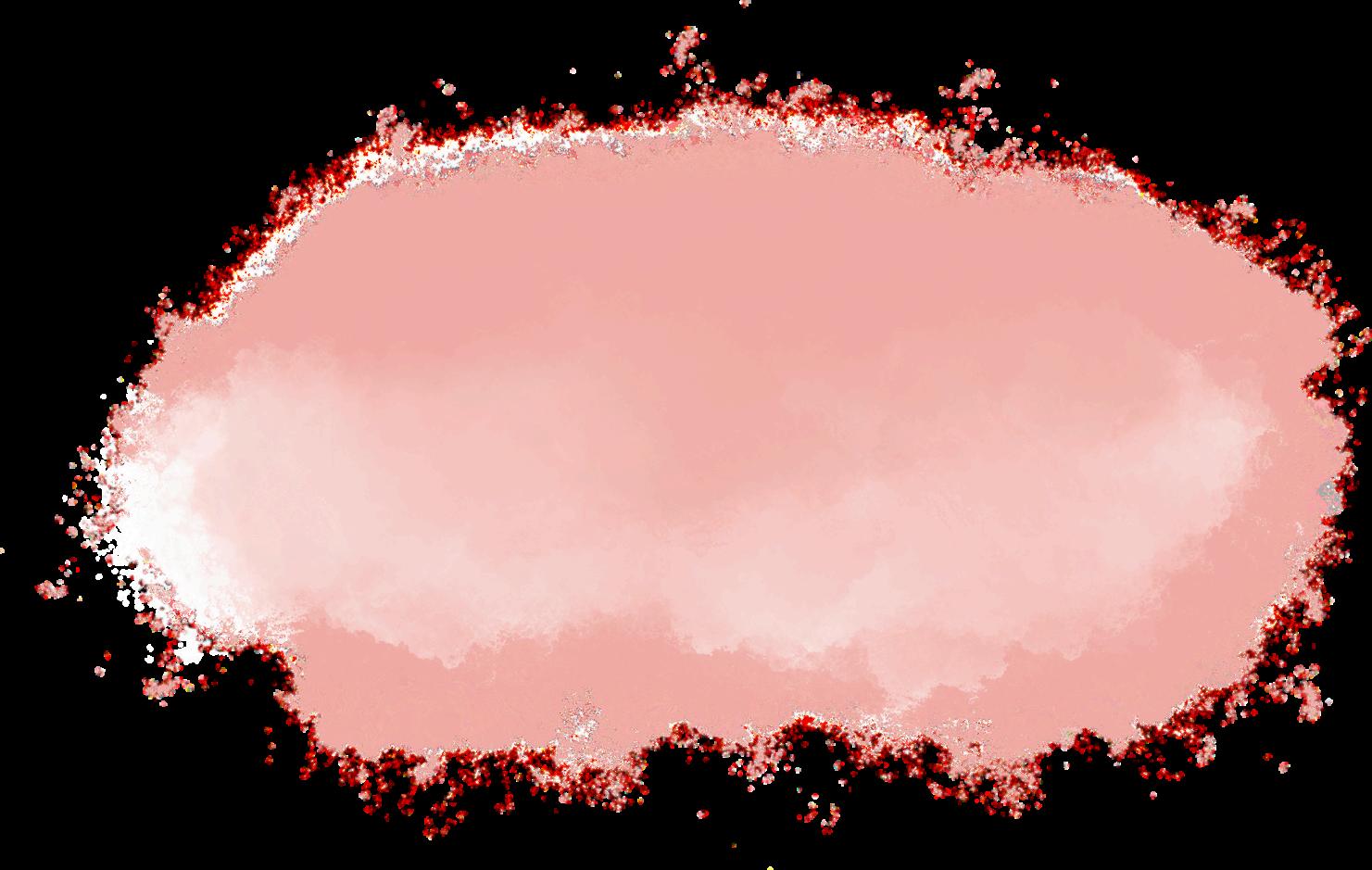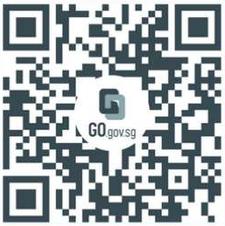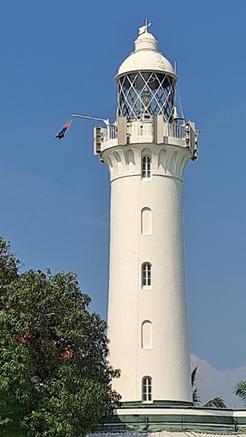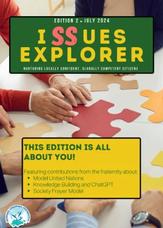

i ues explorer

DFromtheAD’sdesk-BiddingFarewell eepDiveintoDeepfakes
PLearningJourneyswithaDifference DOpportunitiesandResources





FAREWELL BIDDING
Dear friends and colleagues,
I hope that 2024 has been a fulfilling year for you.
It has been a privilege to lead the Social Studies (Secondary) Unit in the last four years, over the development of the 2023 Social Studies Express/Normal (Academic) syllabuses and Interactive Digital Textbook. Our team is proud to have organised the inaugural Social Studies Symposium in 2022. This event brought together our primary and secondary Social Studies educators to affirm the good work done and to renew our shared commitment to teaching Social Studies. In the last few years, I also had the opportunity to work together with our partners, Academy of Singapore Teachers and Singapore Examinations and Assessment Board, to facilitate professional conversations with you.
In my interactions with you, be it through school visits, professional development opportunities or email correspondences, you continue to inspire me to think deeper about how else we in CPDD could support you better. I am grateful for the support and constructive feedback that you have given me and my team as we ventured into uncharted territories. Thank you for journeying with me and allowing me to grow together with you.
I will be leaving the Unit at the end of this year to pursue my studies. I would like to take this opportunity to wish everyone all the best in the coming year. May you continue to thrive as a Social Studies educator and nurture our students to be confident and competent citizens of tomorrow. I hope that you will continue to support my team in CPDD, just as you have supported me all these years.
Take care!
In gratitude, Vikneswari Rajent

Editor’s Note: Queries regarding Social Studies (Secondary) may be directed to Ms Adeline Phua, Deputy Director / Humanities at Adeline Phua@moe gov sg
DEEPFAKES
Deepfakes, a product of Generative Artificial Intelligence (Gen AI), pose a significant cyberthreatintoday’sinterconnectedworld Leftunchecked,theyhavethepotentialto underminesocietaltrustandimpactnationalsecurity.
In this edition, the Social Studies (Secondary) Unit has collaborated with the Cyber SecurityAgencyofSingapore(CSA)totakeadeepdiveintothetopicofdeepfakesso that,aseducators,wecanequipourstudentswiththeknowledgeandskillstonavigate the digital landscape and understand the implications of such technological advancements
WHATAREDEEPFAKES?
DeepfakesarealteredormanipulatedvisualandaudiocontentthatiscreatedusingGen AI techniques to mimic ordinary people Deepfake technology is becoming more sophisticated as it is driven by ever-growing data stores, which can be used to train AI modelsforhigherqualityresults.
Hence,cybercriminalsareleveragingthistechnologytoimpersonatepeoplewhomaybe of influence and conduct scams or phishing attacks The rise of AI has allowed these maliciousactorstoscaleuptheiroperations.

For example, in June 2024, Senior MinisterLeeHsienLoongwarnedpeople about a malicious deepfake video of him commenting on international relationsandforeignleaders.
The video, which had been played over 190,000 times in six days, highlights the extensive reach of deepfakes. Such a video, falsely portraying SM Lee as taking a certain position on a political issue, could lead to misconceptions that are against Singapore’s national interestsanddamagehisreputation

CNA article on SM Lee warning people aboutamaliciousdeepfakevideoofhim

Inanotherexample,inFebruary2024,afinanceworkeratamultinational companyintheAsia-PacificregionwastrickedintopayingUS$25million to scammers. The scammers had used deepfake technology to pose as the company’s chief financial officer in a video conference call, to convincetheworkertomakethefraudulentwiretransfer
Both examples show how deepfakes can disrupt our abilitytodifferentiatebetweenfactandfiction,which can have serious implications for our economy and society. Individuals who mistake deepfakes for authentic content may be manipulated to hold divisiveviewsormayenduplosinglargeamountsof moneyastheyfallpreytophishingscams.
SECURITYMEASURESBY GOVERNMENTSANDCOMPANIES
Countriesaroundtheworldareworkingonstrategies totackledeepfakes.Internationally,thereareongoing efforts to build detection tools to spot content that hasbeengeneratedoreditedbyAI.


Pixel analysis is one technique used to detect inconsistencies in facial expressions and lighting. However, deepfake detection tools for general consumer use are still nascent Nonetheless, content provenance techniques that verify the origin and authenticityofdataarestartingtogainmaturity,withcompaniessuchasMetaand OpenAIhavingannouncedtheirintentiontoincludemetadatatagsorwatermarksto indicateifcontentisAI-generated
Locally, under the Singapore Cybersecurity Strategy 2021, the Singapore government has taken a proactive stance to address threats, broadened Singapore’s scope of protection, and sought to develop deeper partnerships with industry and other organisations to adapt to the changesinourcyberenvironment.
LearnHowto Spota Deepfake

Deepfakescanseemcomplextodetect,especially as they get more realistic by the day. However, we canuseasimple3Aapproach,developedbyCSA, todiscernifwhatwearelookingatisadeepfake.

3AapproachdevelopedbyCSAfordetectingdeepfakes
a)AssesstheMessage
Assessing the message aligns with the Social Studies Inquiry Process, where students exercise reasoning by evaluating the credibility and reliability of the informationgiven.Wecanassessthemessagebycheckingitssource,context,and aim,especiallyifthemessageisunsolicited.
Source: Is the source trustworthy? A trustworthy source can be an official organisationorindividualthatdirectlyownsorknowsthecontent.
Context:Doesthecontentreadorbehaveasexpected?Forexample,Singapore public officials are unlikely to ask the public to invest in third-party investment schemes.
Aim: Does the message ask you to do something urgent, unsafe, or unusual? Take caution if the content asks you to download third-party applications or providepersonalinformation.
b)AnalyseAudio-VisualElements
Look out for telltale signs that the audio or video has been manipulated The table belowlistsindicatorsthatwecanlookoutfor.
Multimedia type

Imagesand Videos
Audiovisual element Indicator
Facial features
Expression& eye movement
Skintexture &skintone
Background consistency
Audioand videos
Audio-video consistency
Blurringaroundedgesoftheface,facial features,orthesideprofile Unevenresolutionandunnaturalshadows aroundfacialfeatures Unnaturaledgesaroundfeatures
Unnaturalorlackofblinking Inconsistentlightreflectionineyes Unnaturalfacialexpression
Unnaturalorinconsistentskintone Differencesinresolutionandskintexture
Blurred,out-of-focusordistortedareasin thebackground
Lipsnotsynchronisedwithspeech
Limitedvarianceininflection Incongruentbackgroundnoise
c)AuthenticateContentUsingTools
Despite concerns about AI, the very same technology is being used by the cybersecurity sector to combat scams. Tools are being developed to detect deepfakes in real-time. We can authenticate content using tech tools, such as Hive’s AIdetection tools. These tools can detect the origins of content or analysepixelsforinconsistencies.
Respondto Deepfake Scams

Educateyourfamilyand friendsaboutdeepfakes anddonotshare deepfakeswithothers
Safeguardyourdigital identityandsetyour socialmediaaccounts toprivatetoprevent yourimagesandvideos frombeingabusedina deepfakescam.
QuestionsforClassDiscussion:
1. How can individuals work with the government to overcomethedangersofdeepfakes?
2 What message would you convey to your classmates tohelpthemnavigatethedangersofdeepfakes?
3 Deepfakes can have serious implications at both the national and individual levels. What are some steps the Singapore government can take to overcome the dangersofdeepfakes?
4. Do you think government efforts are sufficient to combatdeepfakes?Whydoyousayso?
Reportdeepfakestothe administratorofthe platformwhereyou encounteredthemorcall theScamShieldhelplineat 1799 Ifyouareunsure whetherthesituationyou arefacingisascam,you canvisittheScamShield website (www.scamshield.gov.sg) formoreadvice.


Learning Journ with a Differen

In this article, the iSSues Explorer team sat down with Ms Justina Tan and Ms Ayesha from Woodgrove Secondary School’s Humanities Department to hear how they infused the Jigsaw teaching strategy and differentiated instructions into cohort-wide learning journey (LJs) for Secondary 4 and 5 students The LJs, which took place in February 2024, aimed to ignite the students’ passion for learning and to empower them in the learning of SocialStudies

The 2024 school y students and Hum total of five LJs we learningexperience would build on globalisation - for Secondary 4 Express (4E) and Secondary 4 and 5 Normal (Academic) [4&5N(A)] students - and caring for society - for Secondary 4 Normal(Technical)[4N(T)]students.
ThefiveLJswereasfollows:
ReligiousRehabilitationGroup(RRG) MonetaryAuthorityofSingapore(MAS)Gallery Maritime and Port Authority of Singapore (MPA) Tour
NationalLibraryBoard(NLB)NewsGallery DialogueintheDark(DiD)[4N(T)only]
The Woodgrove team hoped that the various LJs would help students to make connections between the content they were studying in the classroom and the real world, allowing them to develop a deeper understanding of the real-world workings of globalisation,itsimpactsandresponsestoit
The Woodgrove team chose to send the Secondary 4 students on LJs in their year of national examination, as globalisation is one of the more abstract topics in the syllabuses. The team believed that these LJs would provide students with a more authentic learning experience, helping them better understand the concepts of interdependence and interconnectedness.



To prepare for the LJs, the Woodgrove team contacted the various agencies as early as November 2023. The list of agencies were curated from their personal networks and the National Education Community Resource Guide The chief consideration in the selection of the LJs was whether they would help students drawconnectionsbetweentherealworldandthecoursebookcontent.

Student Task [4E/4N(A)/5N(A)]


Differentiated Instruction
Prior to their LJs, all students were briefed during their Social Studies lessons on the details of the LJs. The Secondary 4E and Secondary 4&5N(A) students would have to prepare a group presentation on three artefacts/exhibitsfoundattheirLJs.
Thestudentswouldhavetoexplainhoweach artifact/exhibit represented Singapore’s interconnectionsorinterdependencewiththe world. Students would also have to complete an individual reflection of their overall experienceontheirLJsandapeerevaluation oftheirgroupmates.
To facilitate the monitoring of various components of the project, the Woodgrove team created an online logbook and disseminated via Google Classroom. Students’ work for all the components would be assessed for their Weighted Assessment inTerm1

For the Secondary 4E and Secondary 4&5N(A) students, an opportunity for differentiation by interest was provided to increase students’ engagement in the LJs andtoensurethattheyweremotivatedtocompletetheirtasks.Studentswereallowed toselect,intheirindividualgroups,theLJstheyweremostinterestedin
Therewasalsoanopportunityforstudentsto differentiatetheirproduct astheycould choose the mode of their final group presentation. This gave students the flexibility to present their learning and understanding through a medium that they were most comfortable with Students were given a choice to produce either a video, an infographic or a deck of slides for their presentation. To ensure that students were preparedfortheirLJs,eachgroupwastaskedtocomeupwithquestionsabouttheirLJs andpostthemintheirrespectiveclassPadlets.




The Secondary 4N(T) students gathered data for their Performance Task, which explored the inquiry question "How Can We Make Singapore a More Caring and Inclusive Society?" Students were tasked to identify some challenges that the visually impaired might face and explain ways that one organisation (of their choice) provides help for them. The LJ would be part of the primary data collection stage, providing students with the opportunity to speak to the visually impairedandvolunteers.
Post-LJ Findings and Reflections

Students’ responses to the LJs were encouraging. Generally, theWoodgroveteachersfoundthattheLJsaddedvaluetothe students’ experiences and extended what they learnt in the classroom.


Tohelpstudentsbetterunderstandthecolossal size of a container ship and the vital role such vessels play in our shipping industry, students sailedpastsaidshipsduringtheirMPAboattrip
This allowed students to see and feel for themselves, the scale of such vessels, the possible impacts these vessels have on Singapore and the role they play in connecting Singaporeandtheworld.

To complement classroom instruction on Singapore's monetary policy, students engaged in a gamified exhibit at the MAS Gallery. This hands-on experienceenhancedtheirunderstandingofhowoureconomyfunctions.



MonetaryAuthorityof Singapore(MAS) Gallery

From the games, students learnt that Singapore, as a small and open economy that tradeswiththerestofthe world, must constantly adjust its monetary policy.
Anexampleistheregular monitoringandadjusting oftheSingaporedollarto ensure that imported goods remain affordable toSingaporeans.
Images extracted from studentpresentation
ReligiousRehabilitation Group(RRG)

Building on their classroom learning about the community's rehabilitative approach towards radicalised individuals involved in transnational terrorism, students gained first-hand insights from RRG volunteers. These volunteers shared the impact of transnational terrorism on Singapore and their transformative work in counsellingwould-beterrorists


Imageextractedfromstudent presentation


DialogueintheDark (DiD)
To deepen their understanding of the challenges faced by visually impaired individuals, students participated in experiential activities at DiD. This hands-on approach complemented their learning in the classroom about vulnerablepersonsinsociety.
The experiential play helped students better understand the difficulties and challenges faced by the visually impaired, enabling them to find and articulate meaningfulandtailoredsolutions.

Images extracted from studentpresentation


NationalLibraryBoard (NLB)NewsGallery
To reinforce classroom lessons on evaluating the credibility of information, students explored the News Gallery at NLB. Through interactive games and exhibits, they gained practical insights into the causes and consequencesoffakenews.

Through the experience, students learnt the importance of critically evaluating news as citizens and gained awareness of the impact of the Internet and social media on newsdissemination.Thisexperiencealsoreinforcedtheskillsofcheckingforreliability andcross-referencingtaughtduringSocialStudieslessons

For teachers who are keen to organise authentic learning experiences to help students make connections to Social Studies content and inquire into societal issues,theWoodgroveteamhasonepieceofadvice:startplanningearly.
Therearemultiplenodesofcoordinationthatneedtobealignedforaprojectof this scale, such as finding a suitable common date for all LJs. However, with sufficient time, manpower, energy (and perhaps caffeine!), embarking on this journeyisentirelypossibleandworththelearning.
Moving forward, the department looking to refine the programme by reviewing the demands of the group project through providing more scaffolding for the Secondary4N(A)students.
Steering social studies education with you Professional Development Professional Development Opportunities in 2025 Opportunities in 2025

Term1 Term1
Term2 Term2
Look out for the mailer closer to the date!

Social Studies Secondary: Issues-based Seminar 1
Topic: Functions and Roles of Government Mode: Online

Social Studies
Curriculum Leaders Meeting Mode: Face-to-Face
Using Interactive Digital Textbooks (IDTs) to Design Learning Experiences in the Social Studies E/N(A) Classroom Mode: Online



One stop portal to access teaching and learning resources for the E/N(A) and N(T) syllabuses!
We have updated the Wikipage with materials for the 2023 E/N(A) syllabuses:
e-TLS and e-TLG Administering e-School based Assessment for N(A) Social Studies (SS) Paper 1 on SLS Common Last Topics for Revised Upper Secondary Humanities (Social Studies) Syllabuses
Follow and become a member to receive timely updates on new resources and PD opportunities!
go.gov.sg/ssswiki
More resources and ideas for T&L in the SS classroom! Find coverage on: a range of evolving societal issues use of discussion-based strategies and SLS lessons sharing from fellow SS teachers

go.gov.sg/sss-issu




Regularly updated suite of Social Studies lessons hosted on the Student Learning Space (SLS)


uraged to acce lessons via the SLS catalogue
go.gov.sg/slscatalogue-sss


Tip! Bookmark this link in your browser for easy access!

Notetoteachers:
Teachers no longer need to switch to Student Account to access the E/N(A) IDT and the N(T) SLS lessons via the QR codes or the shortened links in the coursebook.
RESOURCES MLU RESOURCES
Interested in finding out how to facilitate Inquiry-Based Learning (IBL) in your Social Studies classroom? Keep a lookout for our new MLU series (Strategies to Facilitate IBL in the Social Studies Classroom) which will be published on our SSS OPAL2.0 Wikipage in Feb 2025! inquiry-based learning
SLS RESOURCES SLS RESOURCES

STUDENT-INITIATED LEARNING SLS MODULE -
CYBERSECURITY IN SINGAPORE


Check out this new SIL SLS module that helps students understand Singapore's Cyber Landscape and the measures taken by the Singapore government to manage cyber threats. Students will also learn how they can play a part to protect themselves from cyber threats and contribute to the nation's cybersecurity This module was developed in collaboration with the Cyber Security Agency of Singapore (CSA) Click HERE to access the lesson
STUDENT-INITIATED LEARNING SLS MODULE -
MAINTAINING LAW AND ORDER IN SINGAPORE BY KEEPING SINGAPORE SAFE FROM THE HARMS OF SUBSTANCE ABUSE AND ADDICTION

Check out this new SIL SLS module that helps students understand why Singapore adopts a zero-tolerance approach towards drugs and how Singapore enforces its zero-tolerance approach towards drugs. This module was developed in collaboration with the Central Narcotics Bureau (CNB) Click HERE to access the lesson.
COMMON LAST TOPICS FOR COMMON LAST TOPICS FOR UPPER SECONDARY SOCIAL UPPER SECONDARY SOCIAL STUDIES
SYLLABUSES STUDIES SYLLABUSES
O-LEVEL
Subject Code
2272, 2273, 2274, 2287, 2288, 2289 (Paper 1)
Common Last Topic for Year of Examination in 2025
Issue 3, Chapter 11: How do we respond to tensions arising from some security impacts of globalisation?

Remarks
Examination for this syllabus in 2025 is for Sec 5N repeat candidates and first time Sec 5N candidates who repeated 4N in 2024
2260, 2261, 2262, 2263, 2264, 2265 (Paper 1)
Issue 3, Chapter 11: How can we respond to the security impacts of globalisation?
2024 is the first year of examination for this syllabus
Subject Code
2125, 2126, 2127 (Paper 1)
Common Last Topic for Year of Examination in 2025
Issue 3, Chapter 9: How can we respond to the economic impacts of globalisation?
Remarks
2024 is the first year of examination for this syllabus.
